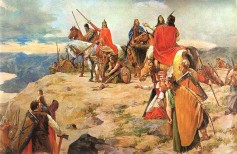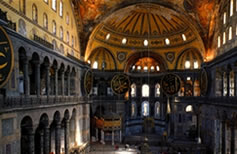Mar 12 2013
Categories: Nations
The age of Kings – Tomislav
0The 20-year gap with no mention of any notable Croatian ruler is filled by Tomislav, who was Muncimir's successor. Although some historiographers insisted on including duke Višeslav in this period, their thesis had no proper arguments. Tomislav's reign was marked with conflicts against the Hungarians and Bulgarians, in which he came out as a victor. After these conflicts, the previous duke was titled king (rex), and the Croatian duchy became a kingdom.
Feb 25 2013
Categories: Nations
Branimir and Muncimir
0In order to seize power, Branimir murdered Zdeslav in 879. With Pope's help, he liberated the country from political dependency of Byzantium, and Croatia was briefly connected to Dalmatian cities under the Byzantine government. Branimir is later succeeded by Muncimir, probably the youngest of Trpimir's sons, on the throne of a strong and independent Croatia. Apart from his involvement in the conflict concerning the takeover of government in Serbia, in a preserved inscription from his time he is also mentioned as a princeps.
Feb 15 2013
Categories: Nations
Dukes Domagoj and Zdeslav
0Following the death of Trpimir, Domagoj, a member of another noble family, sits on the throne. Domagoj's reign was marked by fights against the Saracens, which made him famous in the Christian world, and after an attempt by Basil to appoint Zdeslav to the Croatian throne, Domagoj starts a war against Byzantium, more specifically against Venice. Nevertheless, after Domagoj's death, Zdeslav managed to rule Croatia for a short period, eventually having gotten killed after only a year on the throne.
Feb 14 2013
Categories: Art of different countries
Icons and Iconoclasm
0The worship of icons in the Byzantine empire was so largely developed and widespread, that it influenced on local customs that much differred from the Western ones. By the beginning of the 8th century it has taken unimaginable proportions, leading to open inner struggles, known as iconoclasm.

